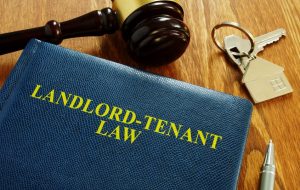Introduction
Evicting a tenant is a difficult and often emotionally charged process, but it may become necessary if the tenant has breached the terms of their lease agreement or caused significant damage to the property. In Ontario, landlords can only evict tenants through the legal process, which can take time and patience. However, in some situations, immediate eviction may be necessary.
In this article, we will discuss the steps that landlords need to follow to evict a tenant immediately in Ontario. From understanding the grounds for immediate eviction to dealing with tenant abandonment, this guide will provide a comprehensive overview of the eviction process in Ontario.
Understanding the Grounds for Immediate Eviction in Ontario

In Ontario, there are specific grounds on which a landlord can seek immediate eviction of a tenant.
These grounds are outlined in the Residential Tenancies Act and include the following:
- Illegal Acts: If the tenant or their guests engage in illegal activities on the property, such as drug use or production, the landlord can seek immediate eviction.
- Serious Damage to Property: If the tenant or their guests cause serious damage to the property, the landlord can seek immediate eviction.
- Threats to Safety: If the tenant or their guests pose a serious threat to the safety of other tenants, neighbors, or the landlord, the landlord can seek immediate eviction.
- Overholding: If the tenant fails to vacate the rental unit at the end of their lease term or after receiving a notice to vacate, the landlord can seek immediate eviction.
It is important to note that to seek immediate eviction, the landlord must have evidence to support their claim and must follow the proper legal procedures. Seeking legal advice is recommended in these situations.
How to Evict a Tenant Immediately in Ontario?
In Ontario, a landlord cannot evict a tenant immediately without going through the proper legal process. The landlord must provide written notice to the tenant using the proper form provided by the Landlord and Tenant Board (LTB).

The notice period depends on the reason for eviction and can range from 7 to 60 days after the written notice is given. If the tenant refuses to leave as agreed to, the landlord can apply to the Board for an order to evict the tenant.
After serving the tenant with an eviction notice, the procedure may take between 85 and 138 days, and if the landlord must evict the tenant forcibly, it may take up to 168 days.
Landlords need to use the proper forms and follow the legal process when evicting a tenant in Ontario.
Serve the Tenant with a Notice of Termination
Serving the tenant with a notice of termination is the first step in the eviction process in Ontario. The notice must be in writing and include the specific reason for the termination, the date the tenant must vacate the rental unit, and any other relevant information required by the Landlord and Tenant Board.
The form used for the notice of termination depends on the reason for the eviction. For example, if the tenant has failed to pay rent, the landlord would use the N4 form. If the reason for the eviction is due to illegal activity, serious damage to the property, or safety concerns, the landlord would use the N5 form.
The notice must be served to the tenant in person or by registered mail. If the tenant cannot be located, the landlord may have to apply for an order of substituted service.
It is important to ensure that the notice is served correctly and that the tenant has received it. The tenant has the right to dispute the notice within a certain time frame, and failure to serve the notice properly can result in delays or the rejection of the landlord’s application for an eviction order 1.
Filing an Application for an Eviction Order with the Landlord and Tenant Board
If the tenant does not vacate the rental unit after receiving a notice of termination, the landlord can apply for an eviction order with the Landlord and Tenant Board (LTB) in Ontario.
- To apply, the landlord must complete the appropriate form provided by the LTB, which depends on the reason for the eviction. For example, if the reason for eviction is failure to pay rent, the landlord would use the L1 form 2. If the reason for eviction is due to illegal activity, serious damage to the property, or safety concerns, the landlord would use the L2 form.
- After applying, the LTB will schedule a hearing where both the landlord and tenant can present their case. The landlord must provide evidence to support their claim, and the tenant can respond to the allegations and provide evidence.
- If the LTB grants the eviction order, the landlord can then take steps to have the tenant removed from the rental unit. If the tenant still refuses to vacate the unit after the eviction order is granted, the landlord can apply for a writ of possession, which allows the sheriff’s office to physically remove the tenant from the property.
It is important to note that the eviction process in Ontario can be lengthy and complex, and it is recommended that landlords seek legal advice before taking any steps to evict a tenant.
Prepare for the Eviction Hearing

Preparing for the eviction hearing is crucial for landlords in Ontario to ensure that they have the best chance of success in obtaining an eviction order.
Below are some steps that landlords can take to prepare for the hearing:
- Review the application: The landlord should review the application and ensure that it is complete and accurate. The application should include all relevant information, such as the reason for the eviction, the specific details of the issue, and any evidence that supports the landlord’s claim.
- Gather evidence: The landlord should gather any evidence that supports their claim, such as lease agreements, rent receipts, and any correspondence with the tenant. The landlord should also take photos or videos of any damage to the property, if applicable.
- Review the tenancy agreement: The landlord should review the tenancy agreement and ensure that they have followed all of the terms and conditions outlined in the agreement.
- Prepare a statement: The landlord should prepare a statement that outlines the reasons for the eviction and the evidence that supports their claim. The statement should be clear, concise, and organized.
- Attend the hearing: The landlord should attend the hearing and present their case to the Landlord and Tenant Board. The landlord should be prepared to answer any questions that the Board may have and to provide additional evidence, if necessary.
Enforcing the Eviction Order with the Sheriff’s Office
Once a landlord has obtained an eviction order from the Landlord and Tenant Board, they can take steps to have the tenant removed from the rental property. The landlord can enforce the eviction order by hiring the Sheriff’s Office to physically remove the tenant from the property.
The steps for enforcing an eviction order with the Sheriff’s Office in Ontario are as follows:
- Apply for a writ of possession: After obtaining an eviction order, the landlord can apply for a writ of possession from the court. The writ of possession is an order that allows the Sheriff’s Office to physically remove the tenant from the property.
- Pay the fee: The landlord must pay a fee to the Sheriff’s Office to enforce the writ of possession. The fee varies depending on the location and the number of attempts required to remove the tenant.
- Schedule an eviction date: The Sheriff’s Office will schedule an eviction date with the landlord and the tenant. The tenant will be given notice of the eviction date and time.
- Attend the eviction: The landlord must attend the eviction with the Sheriff’s Office. The landlord should bring a copy of the eviction order and the writ of possession to the eviction.
- Remove the tenant: The Sheriff’s Office will remove the tenant from the property on the scheduled eviction date. The landlord should be prepared to change the locks and secure the property after the eviction.
To prevent potential legal complications, landlords must follow the correct legal processes while implementing an eviction order with the Sheriff’s Office.
Dealing with Tenant Abandonment and Property Removal

Tenant abandonment is when a tenant leaves the rental property without giving notice to the landlord or without paying rent. If the landlord suspects that their tenant has abandoned the rental property, they should take the following steps:
- Check for signs of abandonment: The landlord should inspect the property to see if there are any signs of abandonment, such as unpaid rent, no personal belongings, or no utilities being used.
- Attempt to contact the tenant: The landlord should attempt to contact the tenant by phone, email, or in writing to confirm whether they have abandoned the property.
- Wait for a reasonable period: If the landlord is unable to contact the tenant, they should wait for a reasonable period, typically 14 days, to allow the tenant to respond.
- Serve a notice of termination: If the landlord has confirmed that the tenant has abandoned the property, they can serve a notice of termination to end the tenancy. The notice should be in writing and should include the date that the tenant must vacate the property, usually within 30 days.
- Store the tenant’s property: The landlord must store the tenant’s property in a safe and secure location for at least 30 days. The landlord should also take an inventory of the property and make reasonable efforts to contact the tenant to inform them of the storage location.
- Dispose of the property: If the tenant does not claim their property within 30 days, the landlord can politely dispose of the property. The landlord should document the disposal and any related expenses.
Seeking legal advice or representation can help navigate the process and ensure that the landlord’s rights are protected.
Conclusion
In Ontario, there is no immediate way to evict a tenant. Landlords must follow the proper legal procedures, which include filing an application for eviction with the Landlord and Tenant Board and obtaining an eviction order. The eviction process can take several weeks or months to complete, depending on the circumstances of the case. Landlords need to seek legal advice or representation to ensure that they follow the proper procedures and that their rights are protected.
FAQs on how to evict a tenant immediately Ontario
1. How fast can you evict someone in Ontario?
For their request to the Landlord and Tenant Board to be legitimate, you must be given 60 days’ notice using an N12 form; and. 30 days following the N12’s termination date, submit an L2 to the Landlord and Tenant Board.
2. Can I call the police to evict the tenant in Ontario?
No, you cannot evict the tenant by the police. Your landlord, a private bailiff, or a security guard is not permitted by law to physically evict you or lock you out. This is only the Sheriff’s purview.
3. How much notice is required to evict a tenant in Ontario?
Your landlord must provide you with at least 60 days written notice if you rent on a month-to-month basis or for a longer duration. Your landlord must provide you with at least 28 days written notice if you pay by the week or day. A Notification to Terminate Your Lease at the End of the Term form should be used for the notice (Form N8).
4. What is an illegal eviction in Ontario?
The Residential Tenancies Act makes it illegal for a landlord to knowingly terminate a tenancy by issuing a notice in bad faith. An individual who is found guilty of this crime faces a fine of up to $25,000. In Ontario, there are about 1.2 million private rental homes.










